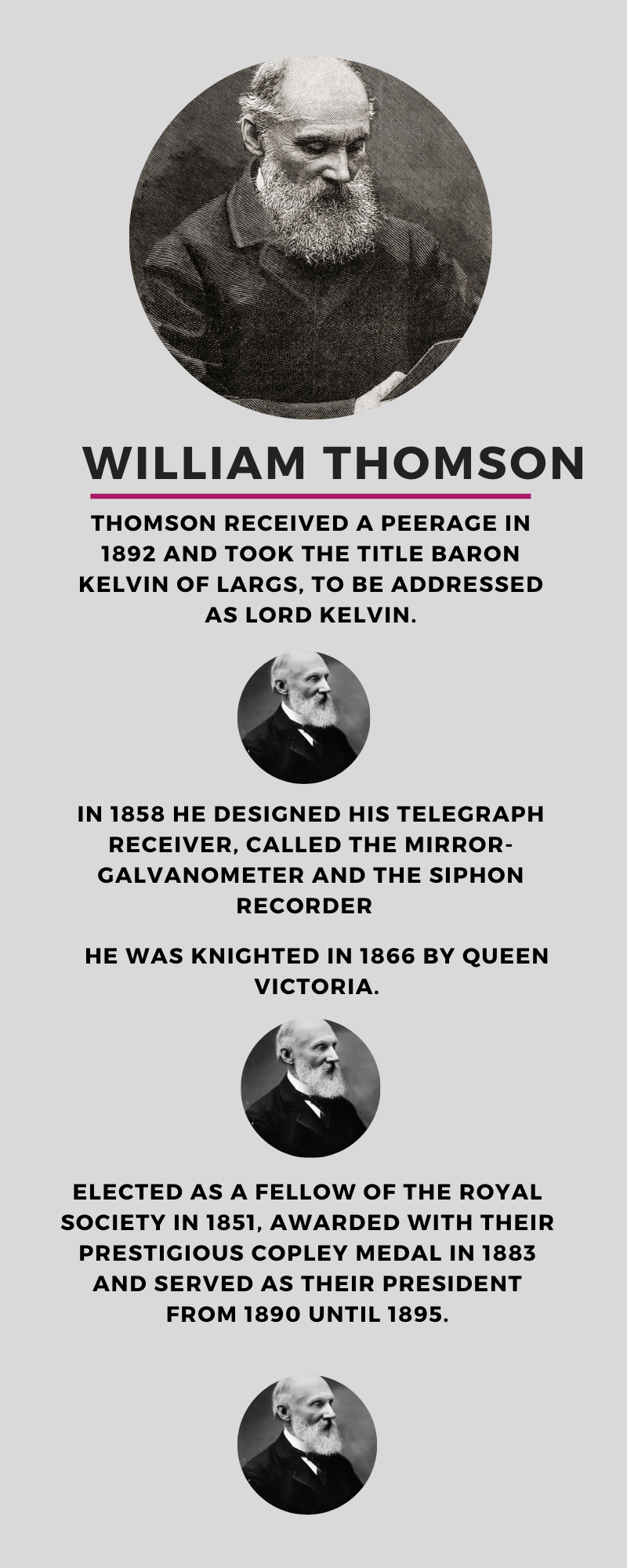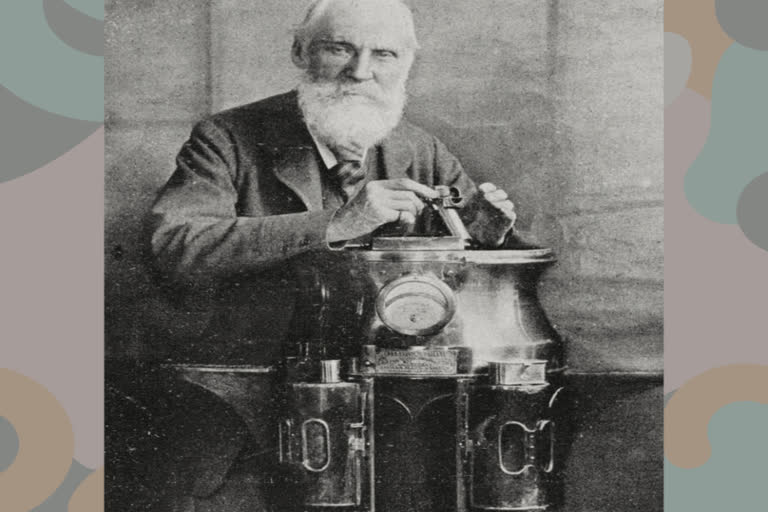Hyderabad; Born on June 26, 1824 in Belfast, William Thomson also known as Lord Kelvin, was an eminent physicist, mathematician, engineer and inventor. He is best known for his contributions to physics in the development of the second law of thermodynamics, the electromagnetic theory of light and the absolute temperature scale, which is measured in kelvins in his honor.
He also contributed to hydrodynamics and provided inventions for the first transatlantic communication cable.

The first physics laboratory in Britain was developed by him. He attended Glasgow university and University of Cambridge. He retired in 1899 from the Glasgow university. He married his second cousin, Margaret Crum. After her death, he married Frances Anna Blandy in 1874.

The famous textbook “Treatise on Natural Philosophy” in collaboration with the mathematical physicist Peter Guthrie Tait was published in 1867.
He also installed a floating laboratory in the yacht, “Lalla Rookh” in 1870, bought by him. He introduced the method of deep-sea sounding.
Interested in creation and evolution, Thomson investigated the Earth’s cooling and made historical inferences of the Earth’s age.
Attending the British Association for the Advancement of Science annual meeting in Oxford in 1900, he famously stated: “There is nothing new to be discovered in physics now. All that remains is more and more precise measurement.”
William Thomson, Lord Kelvin died at his main home from a severe chill at Netherhall, near Largs in Scotland, on 17 December 1907, aged 83.



